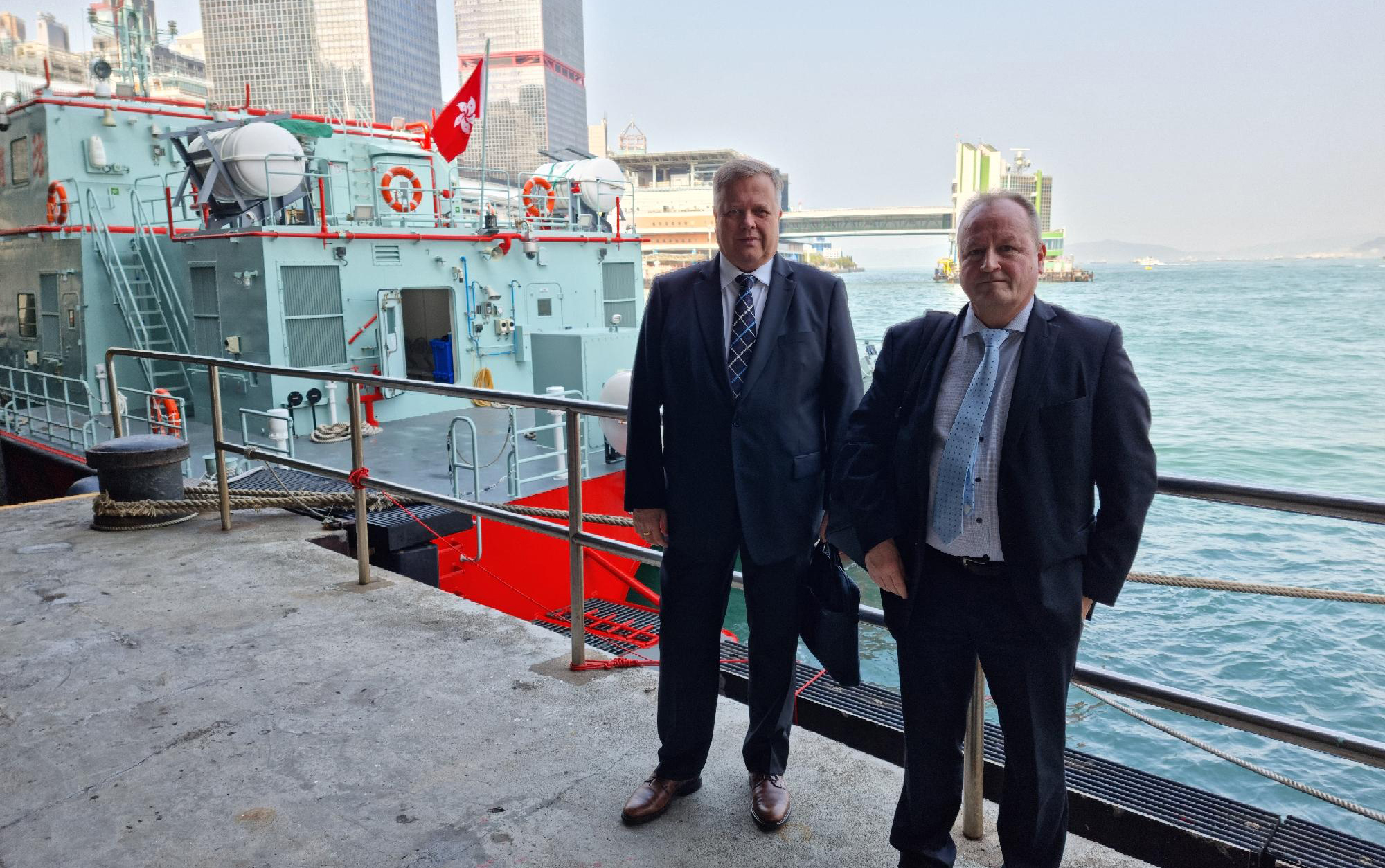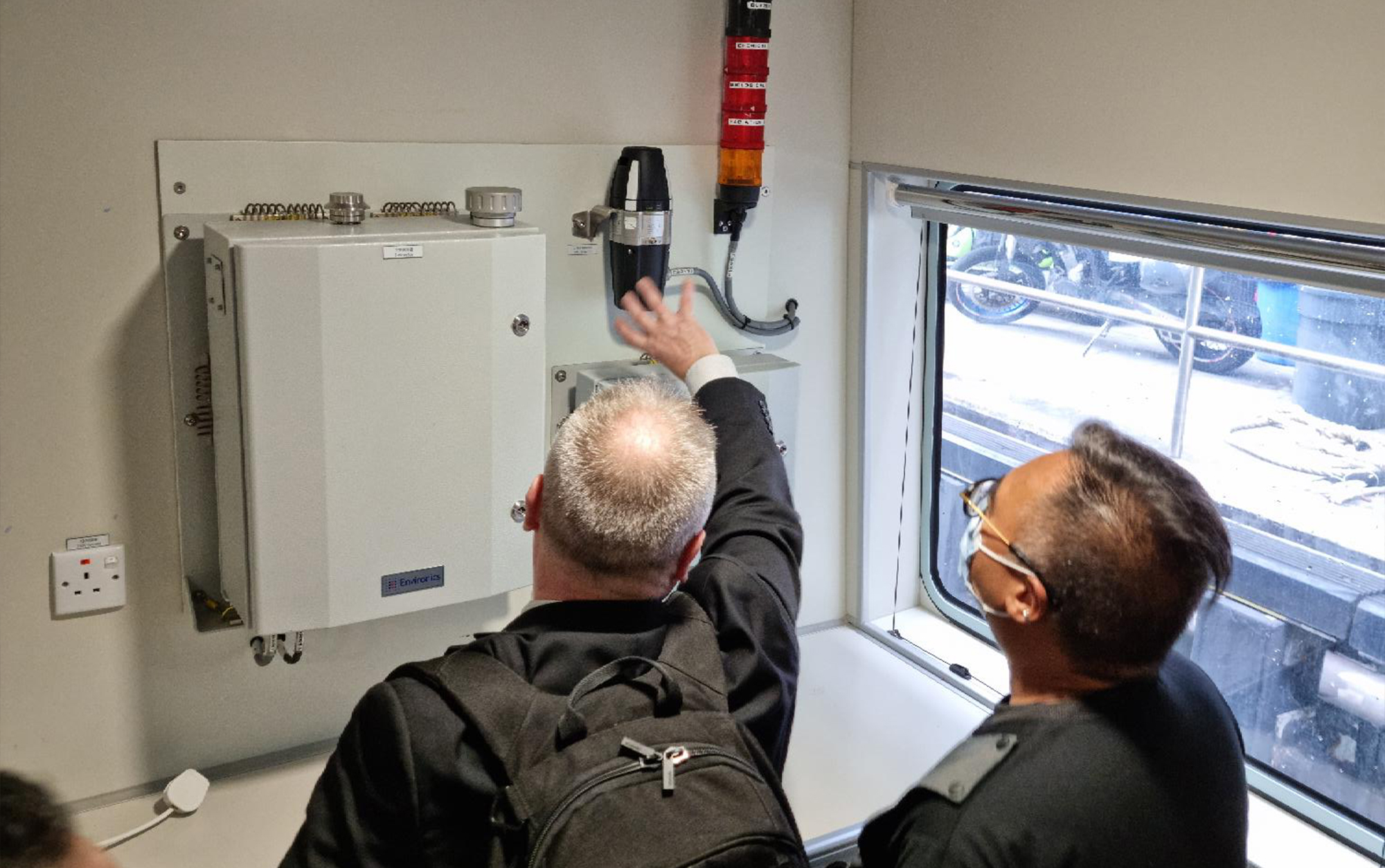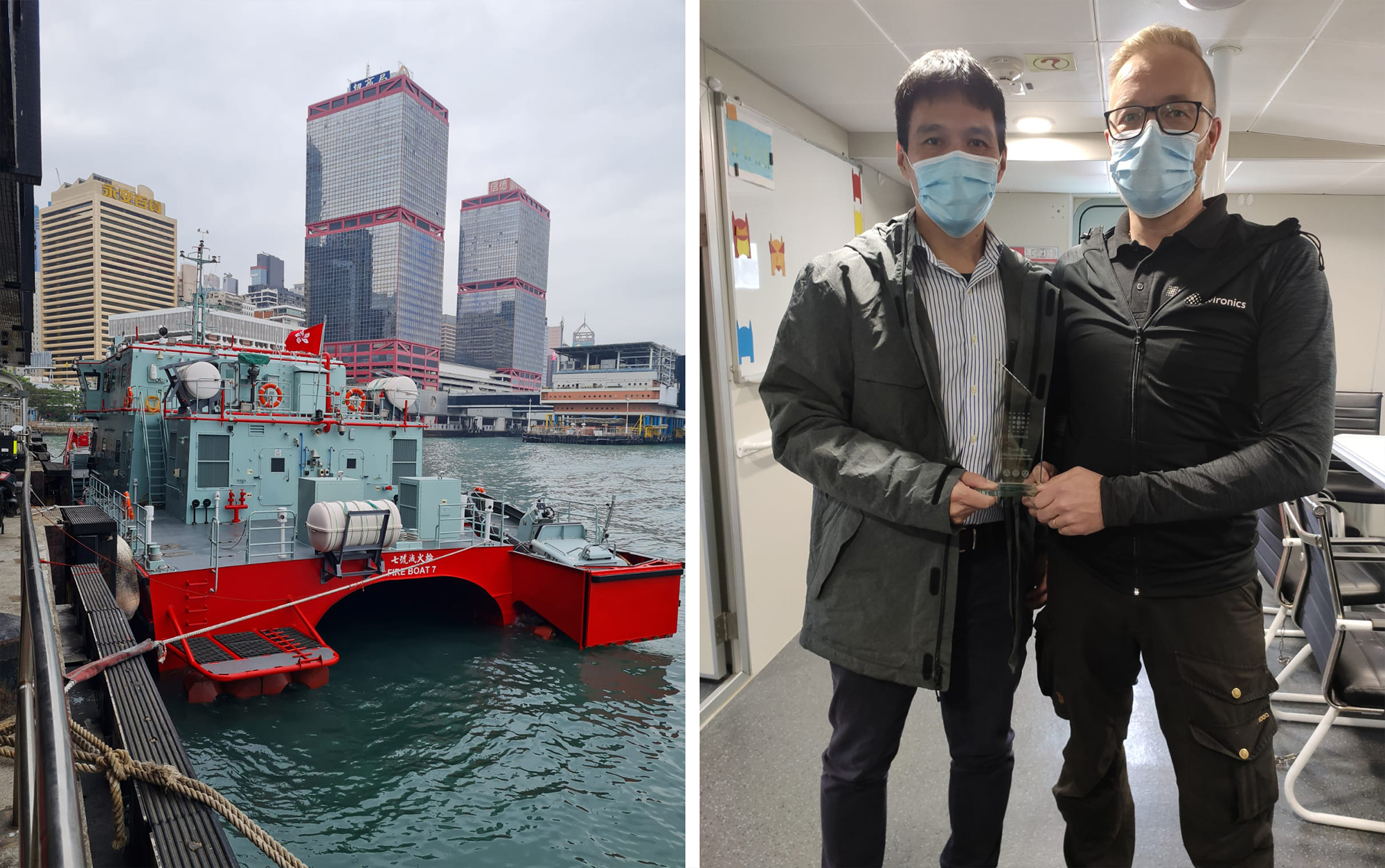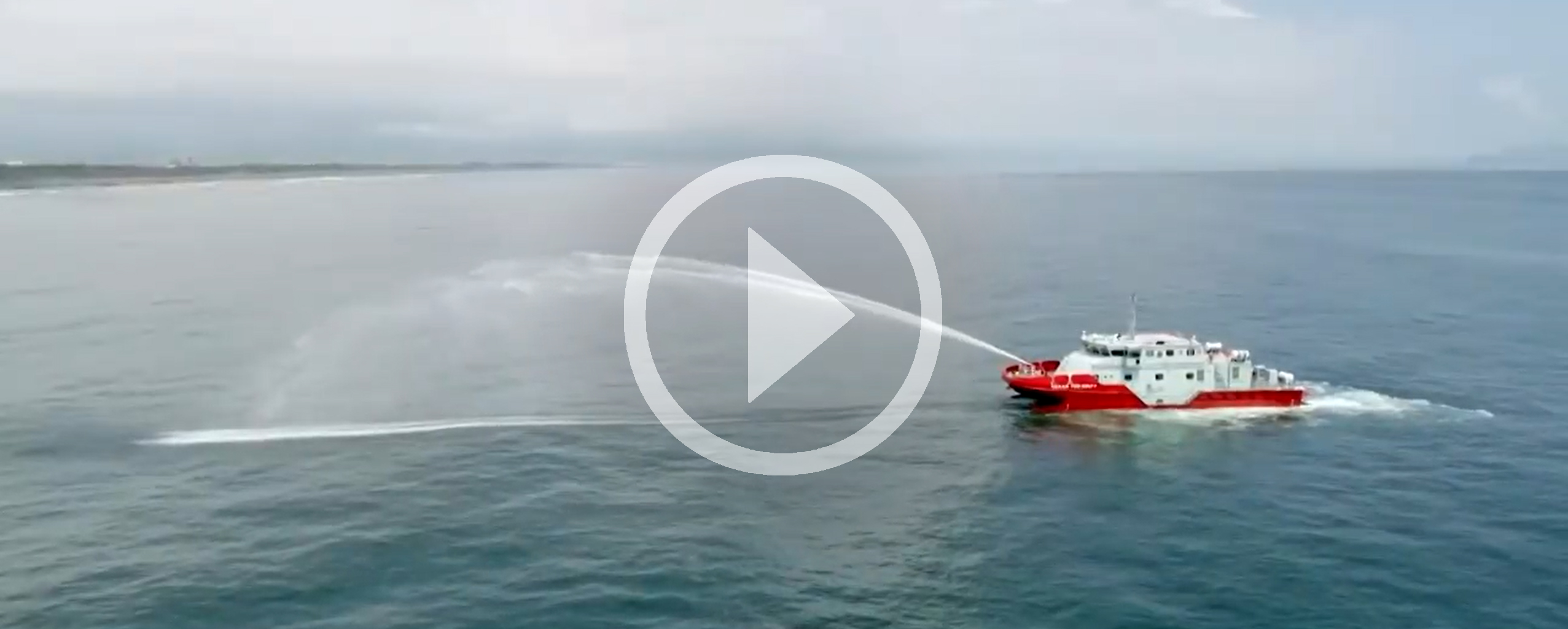Customer Success Story
CBRN Monitoring Capabilities Implemented to Catamaran Fire Boat Built by Lungteh Shipyard in Taiwan
A successful example of cooperation between Bertin Environics and a renowned shipyard.
Big city harbours and other coastal areas experience an ever increasing amount of sea traffic. In addition to human transportation by ferries, the amount of transportation of goods and bulk material is constantly growing. The risk of accidents, or even intentional incidents, in these busy areas is higher than in open seas.
When this happens, fire and rescue services are the first actors on scene, and they are responsible for handling the dangerous situations. The risk of an incident involving hazardous chemicals, biological agents or radioactive materials is normally low, but if anything related to these so called CBRN materials is involved, the seriousness of the situation grows drastically.
Understanding CBRN Threats in Coastal Areas
Chemical
The most probable CBRN threat Firefighting and Rescue vessels will encounter is a chemical accident. Even if there is no chemical transportation involved in the incident, chemical detection is useful in normal fire rescue missions too, because any fire creates hazardous gases to the environment, and the rescue crew must be aware of existing threats.
Biological
A biological threat is the most improbable of the three threats is coastal environment. But if some harmful biological substances were released in the city vicinity, the consequences would be absolutely devastating.
Radiation & Nuclear
A radiation detection system warns the boat’s crew for possible radiation threats and existence of radioactive material. The information gathered by the measurement system on-board can be used, for example, to monitor radioactivity levels in an area. This information can also be utilized by responsible authorities for public safety purposes.
Fire Boat 7 from Hong Kong Fire Services
Bertin Environics supplied to the Hong Kong Fire Services a CBRN detection system to Fireboat 7 built by Lungteh Shipyard in Taiwan.

Photos of Fire Boat 7 courtesy of the Fire Services Department of the Government of the Hong Kong Special Administration Region. Length: 35M // Breadth: 11.7M // Depth: 3.5M // Draft: 1.5M // Speed: 35Kts // Material: Aluminum Alloy
The comprehensive CBRN system complies with the Classification Society requirements and covers chemical, biological and radiation detection. In addition to standard CBRN monitoring, the system also covers flammable gas detection and air quality monitoring in the protected areas inside the vessel.

Area Manager Veli-Matti and Application Manager Arto Penttinen during a customer visit.

Application Manager Arto Penttinen explaining the functioning of ENVI Bioscout and alarm unit.
The project was established in good cooperation with Lungteh shipyard despite some challenges during the process.
The first big obstacle was the bridge collapse near the shipyard delaying the vessel testing and consequent delivery, since it prevented the ship from leaving the shipyard area.
After the vessel was delivered to Hong Kong, the next challenge was the Covid -19 epidemic outbreak, which caused a long lockdown period in Hong Kong area, preventing the travelling of our staff and thus delaying the final testing of the system and the crew training.
However, despite all hindrances during the project, the CBRN monitoring system is currently finalized and in active use to protect Hong Kong area marine traffic and Hong Kong citizens.
Contact a CBRN Specialist
Application Manager

Arto Penttinen
Mr. Arto Penttinen is a CBRN professional working in the field since 2003. During his early years in the this business he was strongly involved in project management but nowadays he is working closely with our Naval & Maritime customers to find the best CBRN Monitoring Solutions for their needs.
Mr. Arto Penttinen has been involved in several stationary CBRN system projects for different vessel platforms, ranging from fire rescue vessels to mine hunters and landing docks.


